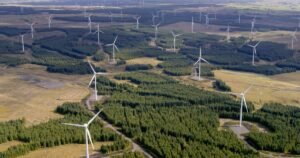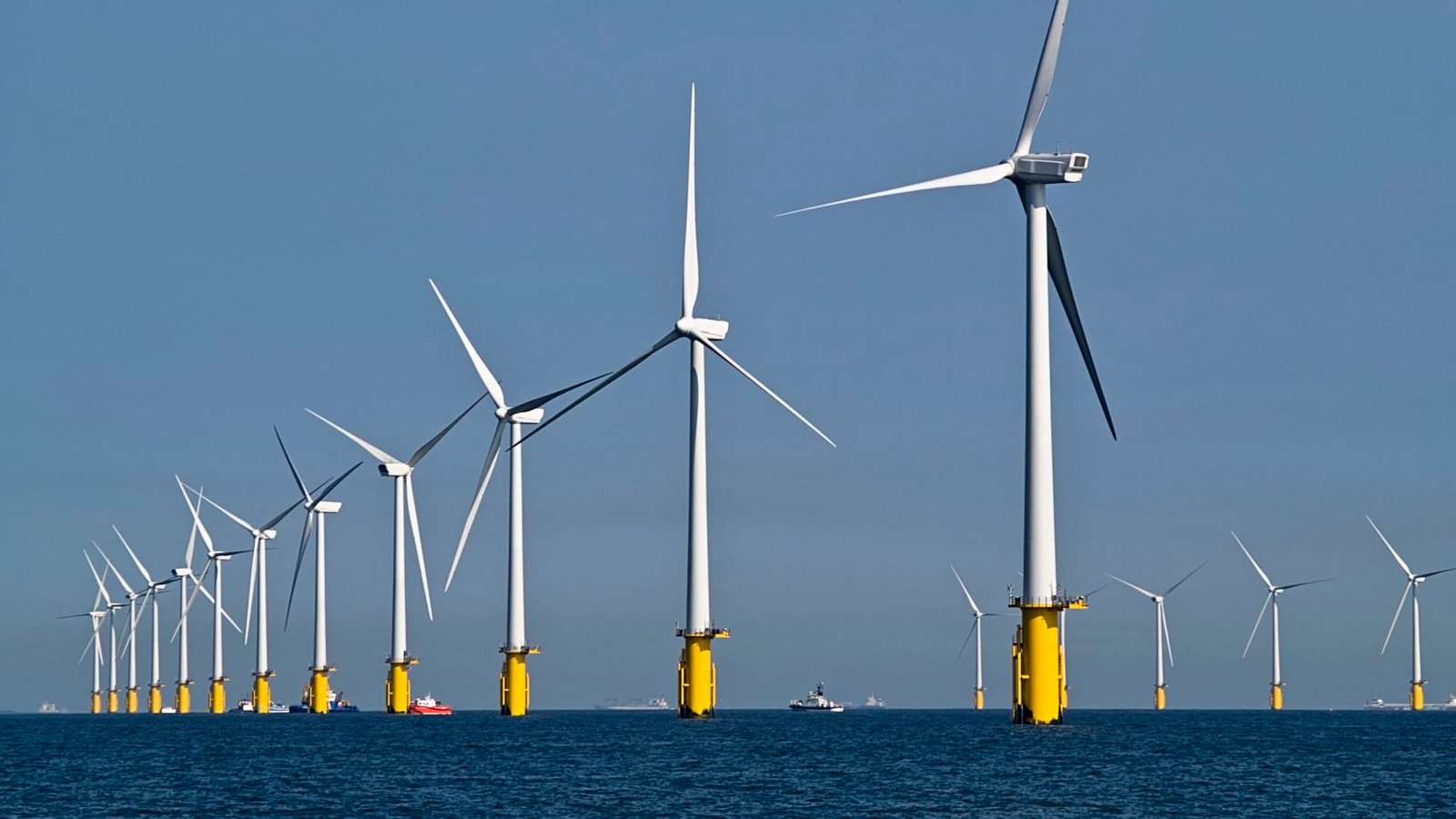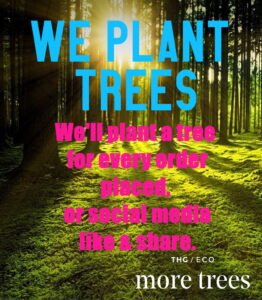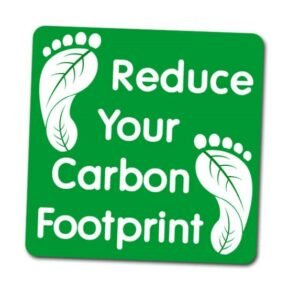The Quest for 200,000 Offshore Wind Turbines by 2050 – Researchers Hugo Putuhena, Fraser Sturt, and Susan Gourvenec from the University of Southampton and the team at Solares Energies have outlined the substantial challenge of positioning up to 200,000 offshore wind turbines required by 2050 to meet global net-zero goals. As of 2022’s end, a total of 63GW capacity was in place globally. This figure will need to surge by 32 times to achieve the 2050 targets, requiring approximately 500,000 sq km of ocean area, comparable to France’s size.
To determine the most suitable sites for these wind farms, several constraints must be considered:
- Adequate windspeeds.
- Avoid navigation routes, ecological reserves, and other sensitive zones.
- Evaluating seabed conditions for construction feasibility.
Their intricate study, which integrated 34 unique constraint layers, found that the vast majority (around 90%) of future turbine placements would need to be stationed in deep waters, about 60m deep. This points towards a pressing demand to further refine deep-water wind tech, likely leveraging innovations like floating platforms.
When examining the British waters as a specific case, the findings showed:

- The UK, already a pioneer in offshore wind initiatives, has roughly 240,000 sq km of available ocean space (comparable to its land size) for turbine deployment.
- Fulfilling the UK’s basic net zero objectives for home electrification would require utilizing 7% of this space. However, when taking broader decarbonization goals into account, the occupied area might expand to 44%.
- In distributing the wind farms equally, about 70% might intersect with one to three constraints, reinforcing the aforementioned need for technological advancements.
While the expansive growth of offshore wind projects to attain net zero appears feasible, it isn’t devoid of challenges. Interactions between wind farms, ecological systems, historically significant locations like shipwrecks, and existing marine activities are unavoidable. These interactions, unless thoughtfully managed, could lead to environmental damage and disruptions in oceanic activities. Notably, deploying turbines in deeper ocean sections and farther from the coast will present its own set of challenges. Addressing these will hinge heavily on technological advancements in the sector.
Spain’s Wind turbine revolution. Or is it?
In Spain, the wind energy sector has undergone significant changes and developments. In 2008, the sector employed more than 40,000 people. However, after a five-year freeze on green energy, employment has dropped by half. Today, companies like Gamesa and Ingeteam have become giants in the industry, with Gamesa merging with Siemens and becoming the world’s fourth-largest turbine producer.

The Spanish Centre for Renewable Energy (CENER), often called the “Silicon Valley of Wind,” serves as the research hub for Spanish wind energy patents. Meanwhile, Navarre’s wind power success has contributed to the employment of 4,000 people in the region, covering 80% of energy demand.
Between 2004 and 2011, two-thirds of the current wind capacity was installed in Spain, making the country a leader in wind technology. The subsequent freeze on green energy in 2011 led to stagnation, but recently the sector has been reviving. Spain is now the third-largest exporter of wind turbines in the world.
The industry also boasts almost 200 factories producing wind machinery within the country. Advances in blade design and the existence of experimental wind farms like CENER give Spain a competitive edge. Efforts are also underway to design efficient energy storage systems to overcome one of the main criticisms of green energy.
However, clean energy currently accounts for only 16.15% of total consumption in Spain, and many in the industry believe that more should be done to leverage this sector to drive economic recovery. The story of wind energy in Spain is one of innovation, challenges, and potential, and the country continues to be a pioneer in the global renewable energy landscape.
FAQs About Wind Turbines
What is a wind turbine, and how does it work?

A wind turbine is a device that converts kinetic energy from the wind into electrical energy. It does this through the use of large blades that capture the wind’s energy and cause a rotor to turn. This rotor is connected to a main shaft, which spins a generator to create electricity.
In more detail, the wind’s kinetic energy turns the turbine’s blades around a rotor. The rotor then spins a drive shaft, which turns an electric generator. Modern wind turbines are equipped with various sensors and controls to optimize their operation according to the wind’s speed and direction, and the electricity generated can be used on-site or fed into the electrical grid for general use.
What are the main components of a wind turbine?
The main components of a wind turbine include:
- Blades: These capture the wind’s energy and cause the rotor to turn.
- Rotor: Connected to the blades, it transfers the energy to the main shaft.
- Main Shaft: This spins the generator.
- Generator: Converts mechanical energy into electrical energy.
- Tower: Supports the structure, providing stability.
- Nacelle: Houses the gearbox, drive train, generator, and other mechanical components.
- Anemometer and Wind Vane: These measure wind speed and direction, allowing the turbine to adjust accordingly.
Together, these components work in unison to capture the wind’s energy efficiently, converting it into a form that can be used to power homes, businesses, and more.
How much electricity can a wind turbine generate?
The amount of electricity that a wind turbine can generate depends on its size, wind speed, and other factors. On average, a typical onshore wind turbine with a capacity of 2.5 to 3 MW can generate enough electricity to power over 1,500 average households per year.
Offshore wind turbines, which are generally larger, can have a capacity of 6 MW or more. Wind speed plays a critical role in energy production; the stronger the wind, the more energy can be generated. It’s also essential to consider the turbine’s location, as some areas will naturally have more wind than others, influencing the overall electricity output.
How do wind turbines contribute to renewable energy?
Wind turbines contribute to renewable energy by harnessing a natural and sustainable resource: the wind. Unlike fossil fuels, wind is not depleted when used, and it does not produce greenhouse gases or other pollutants when generating electricity.
By utilizing wind energy, countries can reduce their dependence on non-renewable resources, such as coal, oil, and natural gas. This transition not only has environmental benefits, reducing the effects of climate change but also promotes energy independence and can stimulate local economies through the creation of jobs and investment in new technology.
What are the different types of wind turbines?
Wind turbines can be categorized into two main types: horizontal-axis and vertical-axis.
- Horizontal-Axis Wind Turbines (HAWTs): These are the most common type and consist of blades that rotate around a horizontal axis. They typically have two or three blades and face into the wind.
- Vertical-Axis Wind Turbines (VAWTs): These turbines rotate around a vertical axis and can capture wind from any direction. They are less common and often used in areas where wind direction changes frequently.
Within these categories, there are also variations such as onshore and offshore turbines, utility-scale and small-scale turbines, each designed to meet specific needs and conditions.
How tall are wind turbines?
The height of a wind turbine can vary widely depending on its design and purpose. Onshore wind turbines usually stand between 80 to 100 meters (262 to 328 feet) tall, including the blades. Offshore turbines tend to be larger, with towers exceeding 100 meters and total heights including blades reaching up to 200 meters (656 feet).
Taller turbines can capture wind energy more efficiently as wind speeds increase with height above ground. Therefore, the specific design and location of a wind farm will influence the chosen height for the turbines.
What is the environmental impact of wind turbines?
Wind turbines offer significant environmental benefits by generating energy without emitting greenhouse gases or other pollutants. However, they do have some environmental impacts.
The construction of wind farms requires land use, which can change the local ecosystem. Additionally, the production and transportation of turbine components consume energy and materials, contributing to their overall environmental footprint. Once operational, turbines may also affect local wildlife and landscape aesthetics.
Mitigation strategies, such as careful site selection and environmental impact assessments, are typically used to minimize these effects, making wind energy one of the more environmentally friendly options for power generation.
How do wind turbines affect local wildlife, especially birds?
The impact of wind turbines on birds is a concern that has received attention. Collisions with turbine blades can cause bird fatalities, and the presence of wind farms may disrupt migration routes or local habitats.
However, studies suggest that the impact on bird populations is relatively low compared to other human-related threats such as buildings, vehicles, and habitat destruction. The siting of wind farms away from major migration routes and the use of bird-friendly designs can further mitigate these effects. Monitoring and adaptive management strategies are often employed to minimize potential impacts on birds and other wildlife.
Are there any negative effects on the landscape or local weather patterns?
Wind turbines can change the visual landscape, leading to opposition from those who feel the structures detract from natural or scenic views. This issue is often subjective, and opinions may vary widely.
As for local weather patterns, some research suggests that large wind farms might have localized effects on microclimates. Turbines mix the air, potentially altering temperature and humidity near the ground. However, these effects are generally considered minor and are localized to the area near the wind farms. Careful planning and siting can help minimize these and other potential negative effects on the landscape and local weather.
How do wind farms affect noise levels in surrounding areas?
Wind turbines do produce noise, mainly from the aerodynamic sound of the blades and the mechanical sound from the gearbox and generator. The noise can be noticeable close to the turbines but typically diminishes with distance.
Modern wind turbines are designed to minimize noise, and regulations often dictate allowable noise levels at residential areas near wind farms. Sound barriers and careful siting can further mitigate noise concerns. Overall, while noise can be an issue in some cases, it is generally manageable through good design and planning practices.
How much does it cost to build and maintain a wind turbine?
The cost of building and maintaining a wind turbine varies significantly based on its size, location, design, and other factors. Onshore wind turbines might cost between $1,200 and $2,500 per installed kilowatt, including construction and equipment costs.
Maintenance and operational costs can add another 1-2% of the initial capital cost per year. Offshore turbines are generally more expensive to build and maintain due to the challenging marine environment.
Economies of scale, technological advancements, and competition in the market continue to drive down costs, making wind energy more financially attractive in many regions.
What is the return on investment for a wind turbine?
The return on investment (ROI) for a wind turbine depends on many variables such as initial costs, wind resources, operation and maintenance costs, energy prices, and government incentives. Generally, onshore wind farms can achieve an ROI within 7 to 10 years.
Offshore wind farms might take longer due to higher capital costs, but the higher wind speeds can also lead to increased energy production, balancing the equation. Careful planning, site selection, and financial management are key to achieving a positive ROI in the wind energy sector.
How efficient are wind turbines compared to other energy sources?
Wind turbines are relatively efficient at converting wind energy into electrical energy, with modern turbines converting around 45% of the wind’s kinetic energy at optimal wind speeds. This efficiency may be lower at non-optimal wind speeds, but it is still competitive with other power generation methods.
When considering the entire lifecycle, including construction, operation, and decommissioning, wind energy has one of the lowest carbon footprints among energy sources. Compared to fossil fuel-based energy, wind turbines are far cleaner and can be considered more efficient in terms of environmental impact.
How long does it take for a wind turbine to pay for itself?
A wind turbine typically pays for itself through energy production within 7 to 10 years, depending on factors like wind speed, turbine size, construction and maintenance costs, and electricity prices. This “payback period” includes not only financial costs but can also account for energy and carbon payback.
After this period, the turbine continues to generate energy at a relatively low ongoing cost, contributing to its economic attractiveness. Government incentives, technological advancements, and economies of scale can reduce this payback period further.
What government incentives exist for investing in wind energy?
Many governments offer incentives to promote wind energy, recognizing its environmental and economic benefits. These incentives might include:
- Tax Credits: Reductions in taxes for wind energy projects.
- Grants and Subsidies: Direct financial support for development.
- Feed-in Tariffs: Guaranteed prices for wind energy fed into the grid.
- Loan Guarantees: Financial backing to reduce borrowing costs.
- Renewable Portfolio Standards: Requirements for utilities to source a portion of their energy from renewable sources.
These incentives vary widely by country and region, reflecting differing priorities, resources, and policy objectives. Together, they can significantly influence the economic viability of wind energy projects.
What new technologies are being developed for wind turbines?
New technologies are continually being developed to increase the efficiency, reliability, and sustainability of wind turbines. Some areas of innovation include:
- Larger and More Efficient Turbines: Advances in materials and design are allowing for larger turbines that can capture more energy.
- Floating Offshore Turbines: These can be placed in deeper waters, accessing more consistent wind resources.
- Advanced Control Systems: Improvements in sensors and software enable more precise control, optimizing energy capture and reducing wear and tear.
- Energy Storage: Integrating energy storage can help manage the variable nature of wind, providing more consistent power output.
- Bird-Friendly Designs: Minimizing impacts on birds through innovative designs and detection systems.
These and other technological advancements are contributing to the ongoing growth and maturation of the wind energy industry.
How do wind turbines handle different weather conditions, such as storms or low-wind situations?
Wind turbines are designed to operate across a range of wind speeds, but extreme weather can pose challenges. In low-wind situations, turbines may produce less energy, but they can still function. Many modern turbines can generate power at wind speeds as low as 3-4 meters per second.
In the case of storms or very high winds, turbines have safety mechanisms to prevent damage. They might be programmed to turn out of the wind, or the blades can be pitched to minimize wind capture. In extreme cases, the turbines might be shut down entirely until conditions improve.
These strategies, along with ongoing monitoring and maintenance, help ensure that wind turbines can operate safely and efficiently across diverse weather conditions.
How are wind turbines designed to maximize energy capture?
Wind turbines are designed to maximize energy capture through a combination of aerodynamic design, materials, control systems, and siting. Key design aspects include:
- Blade Design: The shape and materials of the blades are optimized for aerodynamic efficiency, capturing more wind energy.
- Orientation and Control: Turbines are equipped with sensors and control systems to adjust their orientation and blade pitch to changing wind conditions, maximizing energy capture.
- Tower Height: By building taller towers, turbines can access faster, more consistent winds above ground level.
- Siting: Wind farms are located in areas with strong and consistent winds, and individual turbines are positioned to minimize wind shadow effects from other turbines.
- Gearbox and Generator Design: Efficient mechanical and electrical systems further optimize the conversion of wind energy into electrical energy.
Through these and other design considerations, wind turbines are able to capture and convert a significant portion of the available wind energy in a given location.
What materials are used in the construction of wind turbines?
Various materials are used in the construction of wind turbines, each chosen for its specific properties:
- Blades: Often made of composite materials such as fibreglass reinforced with carbon fibre, providing strength and flexibility.
- Tower: Typically constructed from steel or concrete, offering stability and support.
- Gearbox and Generator: Made with specialized metals and alloys to withstand mechanical stresses.
- Nacelle Housing: Often constructed of lightweight composite materials.
- Foundation: Concrete and steel are commonly used, particularly for larger turbines.
The choice of materials depends on factors such as the turbine’s size, location (onshore or offshore), and design specifications. Efforts are also being made to develop more sustainable materials and recycling methods to reduce the environmental impact of turbine construction and decommissioning.



 Solar Panel Products & Articles
Solar Panel Products & Articles Other Products & Services
Other Products & Services



